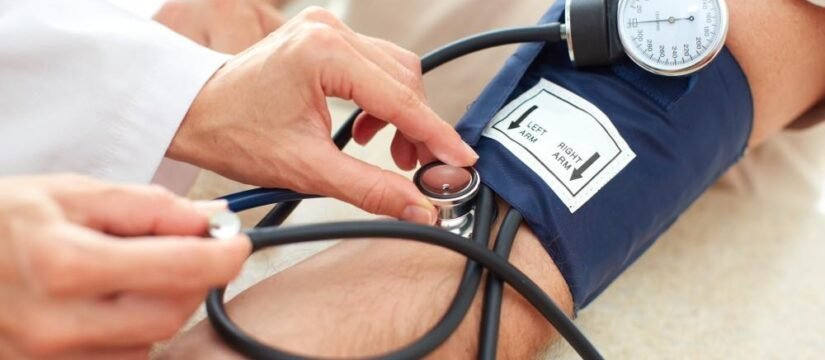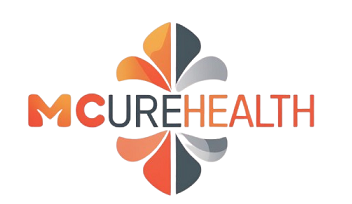
The short answer is no, high blood pressure is not always immediately bad in every single situation, but it is almost always harmful in the long run.
Think of it like a fever. A fever is your body’s way of fighting an infection—it’s a beneficial, short-term response. But a chronically high fever is dangerous and damaging. Blood pressure operates in a similar way: context is everything.
Here’s a breakdown of when high blood pressure might be “not bad” and when it is definitively harmful and .
When High Blood Pressure Might Be Considered “Normal” or Necessary (The Exceptions)
- The “Fight or Flight” Response:
- What it is: If you’re in a dangerous situation or exercising intensely, your body needs a temporary boost in blood pressure. This sends more oxygen-rich blood to your muscles and brain to help you perform.
- Why it’s not bad: This is a healthy, adaptive physiological response. Your blood pressure should rise during a sprint or a stressful event and then return to normal afterwards.
- White Coat Hypertension:
- What it is: Some people’s blood pressure spikes temporarily due to anxiety when it’s measured in a clinical setting (like a doctor’s office).
- Why it’s not inherently bad: The high reading itself might not reflect their true, everyday blood pressure. However, it can be a sign of an anxious disposition and some studies suggest it may indicate a future risk of developing sustained hypertension.
- Acute, Short-Term Illness:
- What it is: During a severe infection or other acute illness, blood pressure might rise as part of the body’s stress response.
- Why it’s not the primary concern: In this context, the blood pressure is a symptom of the underlying problem. Doctors will focus on treating the illness, and the blood pressure often normalizes as the patient recovers.
Why High Blood Pressure (Hypertension) Is Almost Always Bad
When blood pressure becomes chronic (persistent), it is known as hypertension. This is where the significant damage occurs. It’s often called the “silent killer” because it typically has no symptoms until it causes serious damage.
How Chronic Blood Pressure Damages the Body:
| Organ System | Effects of Chronic High Blood Pressure |
| Heart | • Arteries: Damages and narrows arteries (atherosclerosis), reducing blood flow. • Heart Attack: A blocked artery can lead to a heart attack. • Heart Failure: The heart must pump against higher pressure, causing the muscle to thicken and eventually fail. • Aneurysm: Pressure can cause a weak spot in a blood vessel to bulge and potentially rupture. |
| Brain | • Stroke: Damaged arteries can burst or become blocked, cutting off oxygen to the brain. • Dementia: Reduced blood flow can lead to vascular dementia. • Mild Cognitive Impairment: |
| Kidneys | • Kidney Failure: Kidneys filter blood. High pressure damages their delicate vessels, eventually leading to kidney failure requiring dialysis or a transplant. |
| Eyes | • Retinopathy: Damages blood vessels in the eyes, leading to blurred vision or blindness. |
| Blood Vessels | • Peripheral Artery Disease (PAD): Reduced blood flow to the legs, causing pain when walking. |
The Important Gray Area: The J-Curve Phenomenon
This is a complex and critical concept in cardiology. While lowering blood pressure is crucial, evidence suggests that aggressively lowering it too much in certain high-risk patients (especially the very elderly or those with existing coronary artery disease) might actually be harmful, increasing the risk of events like heart attacks.
This creates a “J-shaped” curve on a graph, where risk decreases as pressure is lowered but then begins to rise again if it drops below a certain point. This is why treatment goals are personalized and doctors avoid overtreating to extremely low pressures in fragile patients.
Conclusion: Key Takeaways
- Temporary, situational spikes in blood pressure are a normal part of human physiology and are not inherently bad.
- Chronic, sustained blood pressure (hypertension) is almost always damaging to your body’s vital organs over time, even if you feel fine.
- Treatment is not one-size-fits-all. Goals are based on age, overall health, and other risk factors. What is a “good” pressure for a 40-year-old might be different for an 80-year-old.
They saw that people aged 80 and over who had a lower blood pressure — of 140/90 mm Hg or under — actually had a 40 percent higher mortality risk than peers with blood pressure exceeding those thresholds.
Other blood pressure symptoms
Many people with blood pressure experience no symptoms. As a result, blood pressure is known as a “silent killer.”
When blood pressure increases rapidly and severely, typically up to readings of 180/120 mm Trusted Source or higher, this is known as a hypertensive crisis.
If a person has dangerously blood pressure but no other symptoms, the condition is called hypertensive urgency. If they are experiencing additional symptoms, it is a hypertensive emergency.
What is Normal Blood Pressure?
One of the most common questions people will ask is about normal blood pressure levels. Here’s how it works:
- Blood pressure is measured in two numbers, such as 120/80, which refers to the systolic (the top number) and diastolic (the bottom number) pressures in the arteries.
- Normal blood pressure is when the top number is less than 120 and the bottom number is less than 80.
- Elevated blood pressure is typically 120-129 (top number) and the bottom number is less than 80.
- blood pressure is a top number of 130 or higher. The bottom number is 80 or higher.
- In older adults, the top number may be higher than 130 and the bottom is lower than 80. This is called isolated systolic hypertension. It’s an age-related condition that happens from the stiffening of the major arteries.
- If you have problems with blood pressure, you may not feel any different. However, blood pressure that’s too high can increase your risk of heart attacks and strokes, so it’s important to know your numbers.
How to Measure Your Blood Pressure
Now that you know the healthy blood pressure range, how do you measure for it?
You can buy a blood pressure monitor from Palm Harbor Pharmacy, or visit your family doctor. Blood pressure monitors are available over the counter, and they are a good option if you have trouble reading your blood pressure at home or are less mobile.
Blood pressure monitors work by pressing a cuff against your arm and measuring your blood pressure as it flows through your arm. The important thing to remember is to sit still and quiet for a few minutes before taking your blood pressure. The less stressed you are, the more accurate your reading will be.
Other symptoms can include:
- back pain
- difficulty speaking
- facial flushing
- nosebleeds
- numbness or weakness
- severe anxiety
- shortness of breath
- vision changes
If you have been diagnosed with blood pressure, it is essential to take it seriously and work with your doctor on a management plan that includes lifestyle changes (diet, exercise, salt reduction) and potentially medication. Do not dismiss it just because you don’t feel any symptoms.



Leave Your Comment